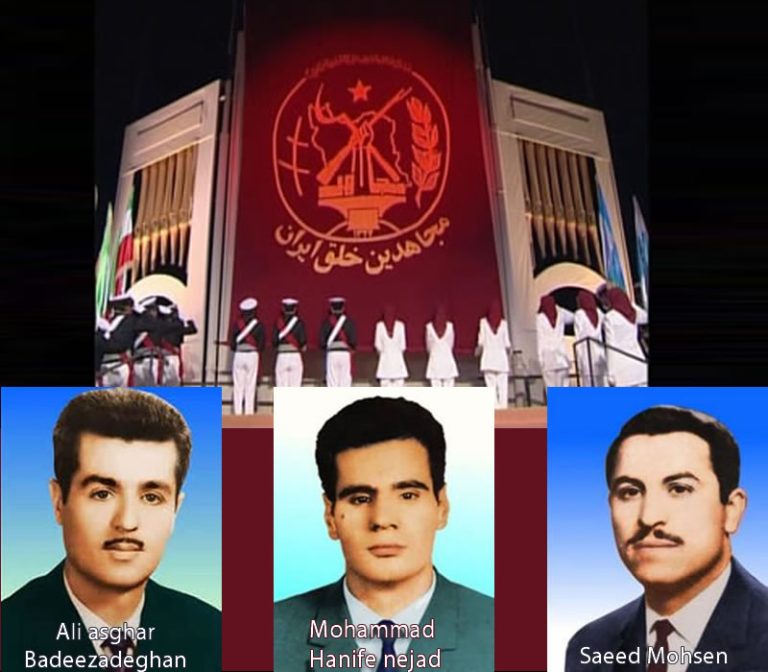On July 14, Hamid Noori, a former Iranian official, was sentenced to life in prison by a Swedish court for war crimes related to the mass executions of political prisoners in Iran in 1988.
Noori was arrested in November 2019 after getting off a flight arriving at Stockholm airport from Iran. Swedish police took action on the basis of a criminal complaint based on the testimony of former political prisoners.
According to the court, 61-year-old Hamid Noori played an important role in the murders of political prisoners between July and September 1988, while he was an assistant prosecutor in Gohardasht prison in Karaj (Iran).
Most of the slain political prisoners Noori is charged with belonged to the Mojaheddin e-Khalq (MEK) group and a small part to the Iranian left. The order for their execution came from the then-leader of the Islamic Republic, Grand Ayatollah Ruhollah Khomeini, following an attack during the Iran-Iraq war by six MEK members.
Secret courts that became known as the “Committee of Death” interrogated and sentenced thousands of prisoners to death. Iran’s current president, Ebrahim Raisi, was one of four judges who sat in the courts, although he denies involvement in the murder.
The MEK, also known as the People’s Mojaheddin Organization of Iran (PMOI), was founded in Iran in 1965 by a group of radical students who combined Marxism and Islam. The founders are three students: Mohammad Hanifnejad, Said Mohsen and Ali Asghar Badizadegan. Massoud Rajavi became the leader of the movement years later and will remain so until 2003, the year when all traces are lost leaving behind the mystery.
MEK members were among the first to wage armed war against the Shah and the many Americans present at the time in the country. They widely supported the attack on the US embassy in Tehran in 1979 and strongly opposed the decision to release the hostages in 1981.
Between 1980 and 1981, Iran experienced a political season of genuine terror, marked both by the purges of the fledgling regime and by the targeted attacks and assassinations of Iran by the Mojaheddin.
In 1981, an attack by the MEK wipes out the leaders of the Islamic Republic: 70 officers were killed, including then Iranian President Mohammad-Ali Rajai and Prime Minister Mohammad-Javad Bahonar. The current Supreme Leader, Ali Khamenei, would be seriously injured in that assassination attempt and lose the use of his right arm.
After that episode, Mojaheddin leaders, including leader Masoud Rajavi, took refuge in Paris, where they founded the National Council of Resistance of Iran (NCRI), the political umbrella behind which the MEK stands.
In 1986, France expelled Rajavi and the MEK, who took refuge in Saddam Hussein’s Iraq, then at war with Iran. From there, the Mojaheddin will take part in the war on Saddam’s side, helping the Iraqi regime identify Iranian targets to strike by staging actual attacks across the border.
The MEK remain in Iraq as guests of Saddam, who gives them money, weapons and military equipment, until 2003, the year of the fall of the regime. Even after 2003, the headquarters of the Mojaheddin remains in Iraq, in Camp Ashraf and then from 2011 in Camp Huriyah.
In 2012, the United States removed the group from the terrorist list and through the UNHCR reached an agreement with the Albanian government to host its 3,500 members in Albania, based on a special status.
But let us return to Hamid Noori, accused by the Swedish court of having participated in the mass executions of Gohardasht and, as such, “intentionally killing a large number of prisoners who sympathized with the Mojaheddin and, moreover, of having inflicted severe torture on prisoners, which are considered torture and inhumane treatment”.
Noor’s defence team claimed he was the victim of mistaken identity. The Iranian Foreign Ministry said: “Iran is absolutely certain that Noori’s sentence was politically motivated and has no legal validity.”
On July 18, shortly after the conviction, a prominent, conservative Iranian politician, Mostafa Mir-Salim, announced that his son was in prison serving a 5-year sentence for links to the Mojaheddin Organization (MEK) based in Albania. The news is somewhat surprising first because Mir-Salim was the minister of culture and presidential candidate, as well as chief of staff to Supreme Leader Ali Khamenei when he was president.
And secondly, his son was reportedly arrested in July 2019 and sentenced to five years in prison in February 2020 on charges of acting against national security through collaboration with the MEK. He was jailed in the Evin prison in February 2021, but his father broke the news only a few days ago and only after Noor’s life sentence in Stockholm.
Meanwhile, on July 15, in Tirana, after an operation by the Special Prosecutor’s Office (SPAK), anti-terrorism and the state police, 20 people, former MEK members, were escorted and interrogated. Under the Prosecutor’s mandate, their homes, cars and computers were checked.
According to the investigative file, those arrested were planning to carry out an attack in Albania against MEK members, based in Manez, who were collecting information on members, leaders and their homes on behalf of the Iranian government. The former MEK members interrogated, according to the Prosecution, were financed by the Pasdarans (Revolutionary Guards-volunteers of an Iranian paramilitary organization engaged in protecting the order established with the Islamic revolution of 1979 from internal enemies and foreign) and the Iranian government.
So suddenly on July 19, a group called “Homeland Justice” posted on the social network “Twitter” threatening material against the Albanian National Agency and Information Society (AKSHI).
“The National Agency of the Information Society (AKSHI) will soon be hit with a heart attack!”
— Homeland Justice (@homelandjustice) July 19, 2022
According to them, they did not want and do not want to harm the interests of the Albanian people. But “When it comes to the corrupt government and politicians of Albania, this is a different story. Albania is not the home of terrorists and fraudsters,” writes the anonymous site.
Among the hashtags used by “Homeland Justice” are those of Manëz and Durrës (places where mojaheddin live in Albania).
The logo used by the hackers features an eagle grasping the Star of David in its claws, a clear reference to the flag of Israel.
All public online services and websites in Albania were closed.
In the official statements of the government and the Albanian Prime Minister, Edi Rama, the hackers did not ask for any reward. But, on the other hand, Rama emphasized that another State is behind the cyber-attack and for sure is not “a digital gang that deals with fines”.
Therefore, the prime minister did not deny, but neither did he claim that Iranian hackers are behind the attack.
“After an extraordinary work, of 96 hours without rest, by the team of engineers and IT experts of AKSHI, the help of the Microsoft DART team (Detection and Response Team) and the partners of “Jones Group International”, we are returning to normality” , notes the announcement from the prime minister.
On July 21, Edi Rama again announced that the cyber-attack was repelled and that the platform was back in operation, repeating that the suspicions about hacking are directed towards the two countries.
“First, the attack is not an attack by ordinary hackers. This is an organized aggression by a State.”
“These techniques have been used in Ukraine, Germany, Lithuania, Malta, the Netherlands, Belgium and other countries in the region,” he continued.
Of course, there is still no official proof, while a series of facts push us in one direction: the Islamic Republic of Iran is most likely behind the cyber-attack on the institutions of the Albanian government.
Post Author
Author
-

Researcher on International Relations Middle East and Balkans
View all posts
CSSII- Centro Interdipartimentale di Studi Strategici, Internazionali e Imprenditoriali,
Università di Firenze, Italy, Albania





Pingback: Will Iran attacks Albania? - Robert Lansing Institute